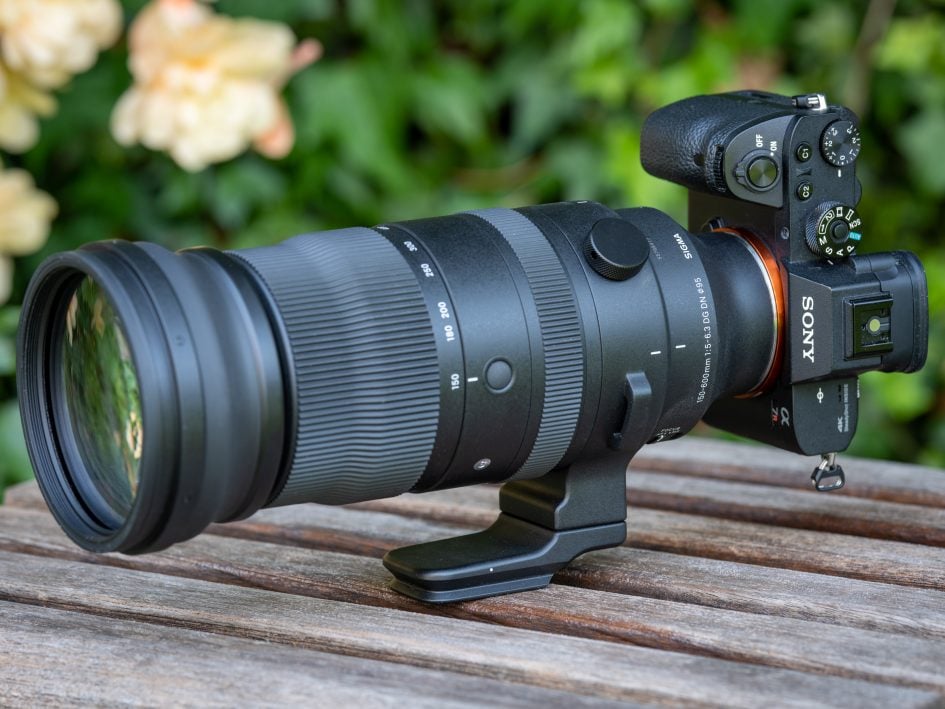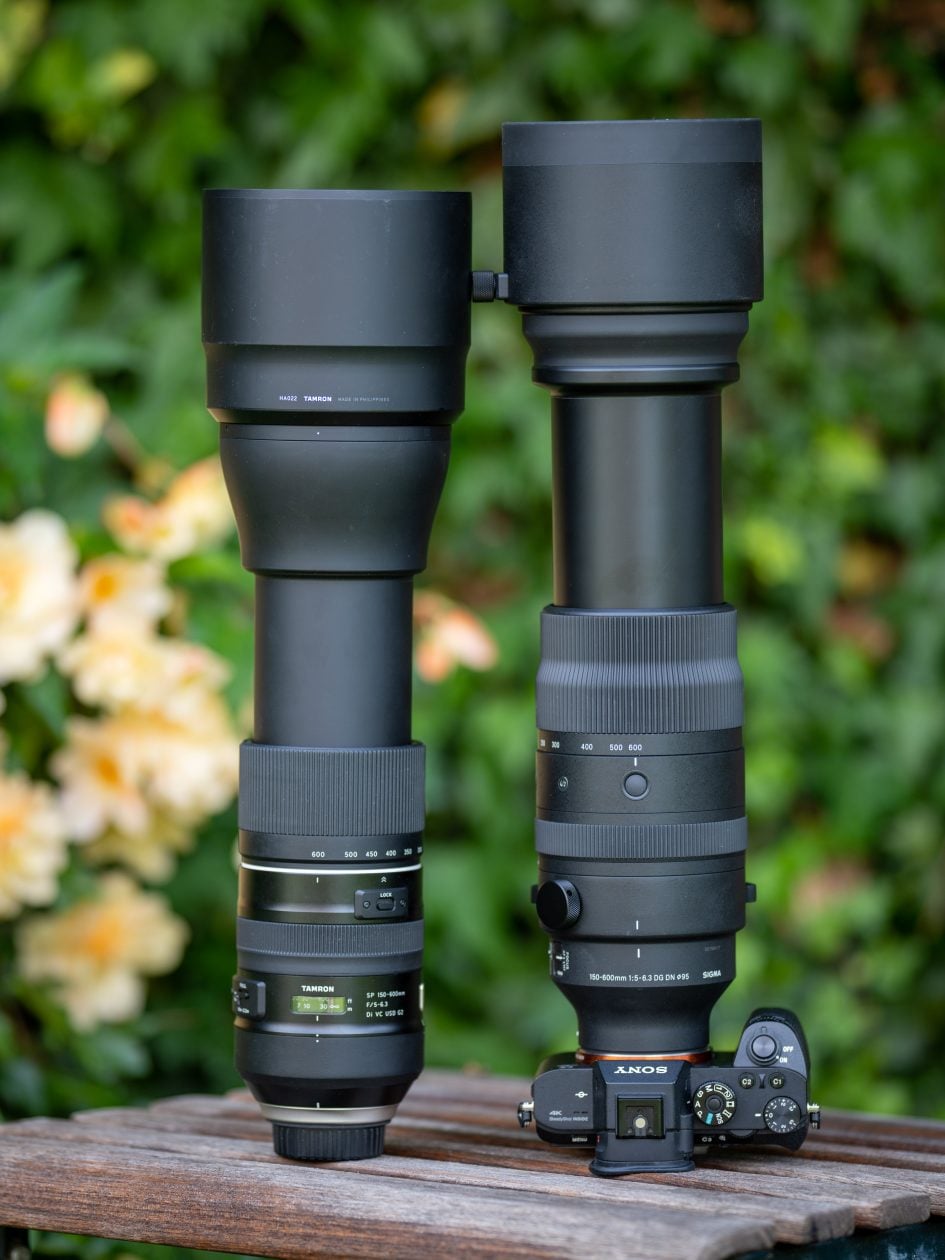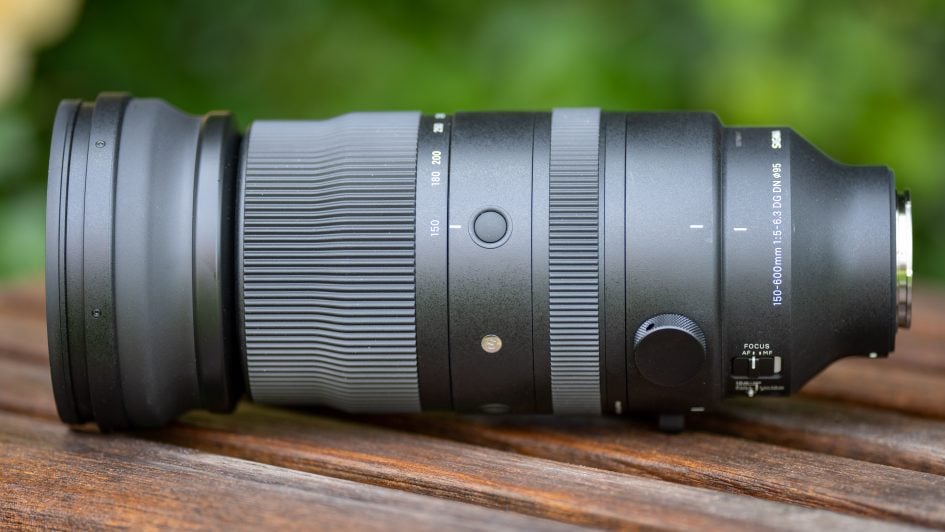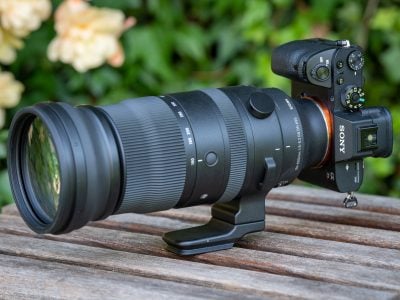Sigma 150-600mm f5-6.3 DG DN OS review
-
-
Written by Thomas
Verdict
The Sigma 150-600mm f5-6.3 DG DN OS is one of only two telephoto zoom lenses designed specifically for mirrorless cameras that reach beyond 500mm focal length – the other being the Sony FE 200-600mm f5.6-6.3 G OSS. The Sigma covers full-frame sensors and is currently available in Sony E-mount and Leica L-mount – although we hope RF and Z versions will follow. At 1399 EUR / 1499 USD / 1299 GBP the lens is not exactly cheap but I assume that street prices will eventually drop below that.
The new Sigma has a lot going for it: Its 4x zoom range covers a very useful 150-600mm, it achieves a magnification of up to 1:2.5 (although you better stop down to f11 to get sharp results), and is weather-sealed including a fluorine coating against moisture and dust on the front element. It offers optical image stabilization with a 3-4 stop effect and has a pretty fast autofocus. Focus breathing is minimal and the lens is almost parfocal, keeping its focus pretty good while zooming. But most importantly its optical performance is the best I’ve seen so far on a zoom lens reaching beyond 400mm focal length: Especially impressive is its performance at the long end where most other super-telephoto zooms become visibly softer.
What’s not to like? Well, the only real issue I have with this lens is the “Portrait Problem”: Using the lens in portrait orientation at focal lengths of 300mm or beyond ruins corner performance. And finding the error with each of the three copies of the lens I tested increases the probability that this is not just a singular problem of these three lenses. This is something that Sigma needs to address. Using the lens in landscape orientation though did not show the slightest hint of the problem – which was the only reason I continued with my tests. The other downsides of Sigma’s new zoom lens are the missing teleconverter for E-mount and the veiling glare which can reduce contrast considerably in challenging contra-light situations.
And you should be aware that after mounting a Sony Alpha body you’ll be schlepping almost 2.9kg (6.4 lb.) around. Shooting such a heavy combo hand-held certainly taxes the limits of the OS image stabilization at the long end – and can lead to softer images outside the center when the OS is at full tilt.
Above: Tamron SP AF 150-600mm f5-6.3 Di VC USD G2 (left, needs mount converter), Sigma 150-600mm f5-6.3 DG DN OS (right)
Compared to Sigma 150-600mm f5-6.3 DG HSM OS Sports
The Sigma 150-600mm f5-6.3 DG HSM OS Sports is a DSLR design from 2014 and can still be used via mount converter on a Sony E-mount camera. There are three major drawbacks to the older lens: At 2860g (plus mount converter) it is much heavier than the new lens, from the MTF charts and my experience the older lens is not as sharp especially at the long end, and the old lens is still more expensive.
For sample images see my Sigma 150-600mm f5-6.3 DG HSM OS|Sports album at Flickr.
Compared to Sony FE 200-600mm f5.6-6.3 G OSS
The Sony 3x zoom was until recently the only long telephoto zoom lens originally designed for mirrorless cameras (with E-mount) reaching beyond 400mm focal length. Now there is the Tamron reaching 500mm and the new Sigma reaching up to 600mm as well. The major differences between the Sony and the new Sigma? The Sony lens can use Sony’s 1.4x and 2x teleconverters to result in a 280-880mm f8-9 or even 400-1200mm f11-13 lens. The Sigma on the other hand is more flexible with it’s 4x zoom giving a wider view at the short end (16.4 degrees vs. 12.5 degrees) which might be a boon if the action gets closer than anticipated. And from the MTF charts I assume that the Sigma is sharper at the long end. Regarding size and weight both lenses are similar with the Sony being a non-extending design: So the Sony is longer than the Sigma at 150mm focal length but shorter than the Sigma at 600mm. In my opinion, the choice between the Sony and Sigma are pretty simple: If you value the flexibility on the short end go for the Sigma. If you need more reach than 600mm on your Sony E-mount camera go for the Sony lens (plus teleconverter).
For more details see my Sony FE 200-600mm f5.6-6.3 G OSS review so far.
Compared to Tamron 150-500mm f5-6.7 Di III VC
The Tamron is also a new design for mirrorless cameras and is almost as sharp as the new Sigma. Priced roughly at the same level, the Tamron misses 100mm at the long end but for that is 265g (9.4oz.) lighter, 67mm shorter, and uses 82mm filters instead of 95mm. Feature-wise both lenses are almost on a par with the Sigma having the benefit of being able to use teleconverters – at least in its L-mount version – and the mount conversion service. So if you’re the owner of an L-mount camera, the Sigma is the only game in town. But when your looking for a long telephoto zoom lens for your E-mount Sony camera, you have a choice between the smaller and lighter Tamron and the reach of 600mm plus a better optical performance from the new Sigma.
For more details see my Tamron 150-500mm f5-6.7 Di III VC review where the lens earned a Recommended.
Sigma 150-600mm f5-6.3 DG DN OS final verdict
Sigma has finally come up with a modern mirrorless design for a super-telephoto lens with a 4x zoom range: They managed to make it much lighter, optically better, and also cheaper than its predecessor – not a small feat! Optical performance is the best I’ve seen so far on a zoom lens reaching beyond 400mm focal length. But 3 out of 3 copies of the lens could only reach these results when used in landscape orientation: As soon as I turned to portrait orientation corner sharpness deteriorated significantly. A serious fault that Sigma hopefully can remedy. But other than that Sigma has designed a very compelling super-telephoto zoom which clearly earns a Highly Recommended – with the caveat that you need to find a good copy!
Good points:
- 4x zoom range reaching up to 600mm focal length.
- Easy to operate as push/pull zoom.
- Very good resolution across the full frame and over the complete zoom-range.
- Almost no longitudinal colour aberrations.
- Usable close-up performance at 600mm focal length at a very comfortable working distance.
- Optical image stabilization.
- Pretty fast autofocus.
- Works with Sigma’s teleconverters for L-mount.
- Extensive weather sealing plus fluorine coating against moist and dust.
- Low vignetting and minimal distortions (through lens profile).
- Can swap mounts (at a cost) between Sony E and Leica L-mount.
- Much lighter than Sigma’s 150-600mm f5-6.3 DG OS HSM Sports.
Bad points:
- Probably does not work with Sony’s teleconverters.
- Veiling glare reduces contrast considerably in challenging contra-light situations.
Caveat:
- 3 out of 3 test copies of the lens showed a strong deterioration of corner sharpness when the lens was used in portrait orientation. Make sure to get a good copy.







